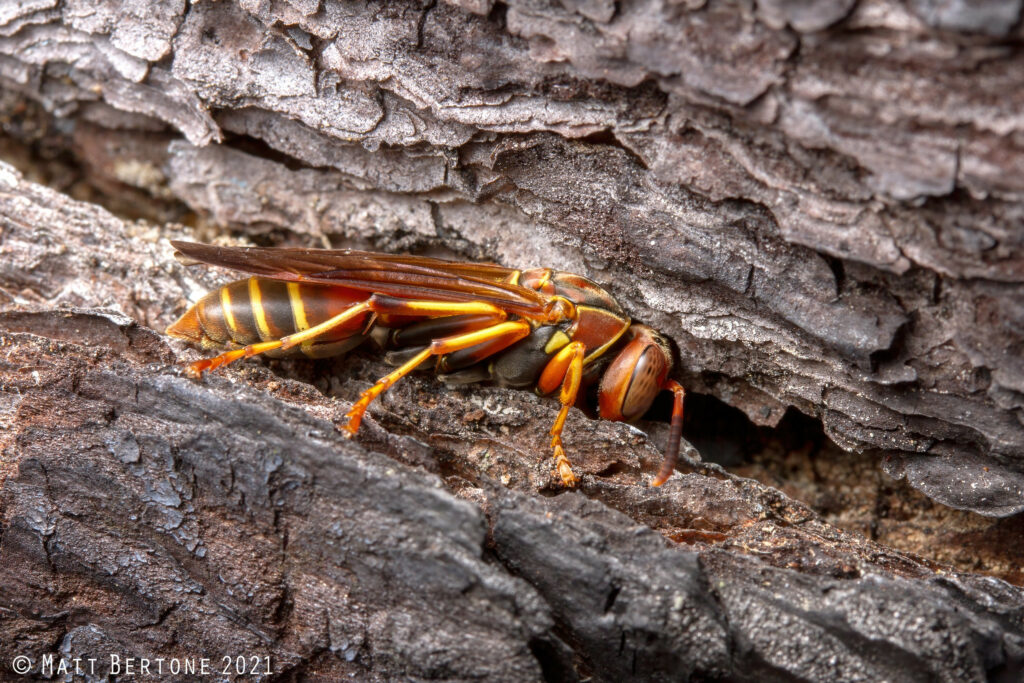Wasp Queens Waking Up After Winter Slumber
go.ncsu.edu/readext?852718
en Español / em Português
El inglés es el idioma de control de esta página. En la medida en que haya algún conflicto entre la traducción al inglés y la traducción, el inglés prevalece.
Al hacer clic en el enlace de traducción se activa un servicio de traducción gratuito para convertir la página al español. Al igual que con cualquier traducción por Internet, la conversión no es sensible al contexto y puede que no traduzca el texto en su significado original. NC State Extension no garantiza la exactitud del texto traducido. Por favor, tenga en cuenta que algunas aplicaciones y/o servicios pueden no funcionar como se espera cuando se traducen.
Português
Inglês é o idioma de controle desta página. Na medida que haja algum conflito entre o texto original em Inglês e a tradução, o Inglês prevalece.
Ao clicar no link de tradução, um serviço gratuito de tradução será ativado para converter a página para o Português. Como em qualquer tradução pela internet, a conversão não é sensivel ao contexto e pode não ocorrer a tradução para o significado orginal. O serviço de Extensão da Carolina do Norte (NC State Extension) não garante a exatidão do texto traduzido. Por favor, observe que algumas funções ou serviços podem não funcionar como esperado após a tradução.
English
English is the controlling language of this page. To the extent there is any conflict between the English text and the translation, English controls.
Clicking on the translation link activates a free translation service to convert the page to Spanish. As with any Internet translation, the conversion is not context-sensitive and may not translate the text to its original meaning. NC State Extension does not guarantee the accuracy of the translated text. Please note that some applications and/or services may not function as expected when translated.
Collapse ▲It’s feeling a lot like spring out there! As the warm weather bring feelings of joy from longer days and more time outside, it also means that insects and other arthropods are waking up and becoming active after the long, cold winter (for example, some mites and beetles).
One group of insects that are conspicuous at this time of year are the social wasps in the family Vespidae, including paper wasps, yellowjackets, and hornets. These insects overwinter as mated queens, the rest of their colonies having died out the previous year. These queens are now becoming active and emerging from their resting sites (which may include people’s homes). The wasps may hover around properties looking for the best place to start their new colony, or just be flying around yards to get to the best site.
If left alone, these wasps are not likely to sting; however, it does happen sometimes. Luckily, barring any allergies, these wasps are not dangerous to most people. Monitoring where they are beginning to make nests may help with controlling them and discouraging their colonies. Paper wasps typically build small colonies under the overhangs of homes and other human structures, while yellowjackets often excavate a hole in the ground where they build their paper nest. Hornets are the largest of these wasps, and typically build their nest in tree cavities (though sometimes in homes and buildings).
Due to the large size of some of these wasps, many people fear that they are the invasive Asian giant hornets (incorrectly called “murder hornets”). This species of large wasp is not yet found outside the extreme Pacific Northwest of the country, so the wasps seen here in NC are almost certainly not that species. For information on how to ID look-alikes of the Asian giant hornet please see this side-by-side comparison.
For more information on management of these wasps, please see the following fact sheets:




